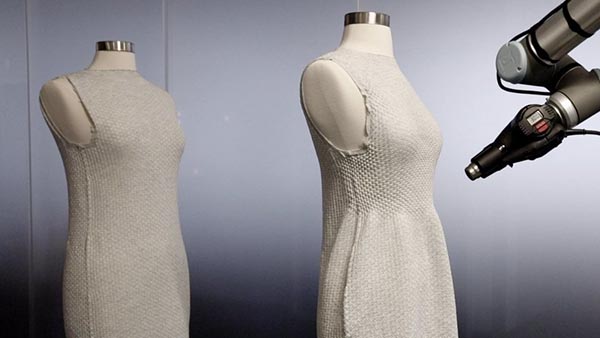
AtW Book Club: See You in the Funny Papers
Do you like comic strips? (Do you remember comic strips?) We have fond memories of Bloom County, Calvin & Hobbes, even Peanuts—and of course the greatest of them all: The Far Side.
Coming in October 2024 and written by journalist and printing historian Glenn Fleishman, a new book pays tribute to what used to be virtually everyone’s go-to page in the daily newspaper: the comics. Via Boing Boing:
If you love newspaper comic strips, you will love my new book How Comics Were Made: A Visual History from the Drawing Board to the Printed Page. I’ve combined years of research and the diligent collection of unique comics printing artifacts with dozens of interviews with cartoonists, historians, and production people to tell the story of how a comic starts with an artist's hand, and makes its way through transformations into print and, more recently, onto a digital screen.
The book will be a glorious full-color celebration of the art form, heavily illustrated from the 1890s to the present day with materials that you’ve never seen before, drawn from my personal collection and museums, cartoonists and their estates, and institutions around the United States. It will also feature never-before-published strips and versions of some popular comics.
Fleischman has launched a Kickstarter to help fund the book. It’s almost 60% funded with, as of press time, two weeks left to go.
We were reminded of a classic MST3K Invention Exchange in which Joel invented a machine to mashup different comic strips:
“Ziggy had Garfield neutered? Now that’s funny!”
Signs of the Times, Part the Ongoing: Everywhere a Sign
Signs. We can’t really manage without them (although The Five Man Electrical Band were not fans) and few places boast such a diversity of signage as New York City. Via Laughing Squid, Jack Coyne of Public Opinion made a video journal of the signs he encountered as he walked from the length of Manhattan, from Washington Heights to the Battery. He chronicles how the signs reflect different neighborhoods and interviews residents about how signage affects them—or, in the case of the subway, confuses them.
Graphene Spins a Yarn
Was it a good week for graphene news? It’s always a good week for graphene news! ColossusTex introduces a graphene-based yarn. From (who else?) Graphene-Info:
The company states that its new graphene yarn boasts a myriad of benefits that set it apart from traditional yarns, like an antibacterial rate of 99%, odor elimination and significant reduction of the chance of skin diseases. Also, the incorporation of far-infrared health care technology promotes microcirculation on the body surface, enhances blood circulation, and boosts cellular metabolism.
Now all these need is a graphene-based cat to play with the ball of yarn.
Dressing Down
Via Core 77, Sasha McKinlay, a design researcher at MIT’s Self-Assembly Lab has created a new way of producing clothing.
[The] 4D Knit Dress is produced, to a generic size, on an industrial knitting machine, using an active yarn she’s developed.
Probably not graphene-based.
The idea is that the wearer has their body scanned, and then a robotic arm outfitted with a heat gun selectively blasts the dress based on their body's parameters. This could be done at the point-of-purchase.
Presumably not while the untailored garment is still on the customer, lest they get blasted with a heat gun.
“When we apply heat, the fibers shorten, causing the textile to bunch up in a specific zone, effectively tightening the shape as if we’re tailoring the garment,” explains Architectural Design student Danny Griffin, who programmed the robot.

Furthermore, the dress can later be restyled with another heat application. “A dress can begin with one design — pintucks across the chest, for example — and be worn for months before having heat re-applied to alter its look. Subsequent applications of heat can tailor the dress further.”
Maybe you could use a hair dryer to make slight alterations? At any rate, this could also be great for retailers.
Rather than having to make and stock a number of different sizes and styles, they could conceivably produce just one or two sizes—say, Small and Large—and the robotic heat gun could fill in the blanks. It could also produce the currently-in-flavor style on-demand.
And if someone loses or gains weight, they conceivably don’t need to buy a new one; it can just be resized. Hopefully it can be applied to other kinds of clothing; some of us just would not look good in a dress no matter how much heat you blasted us with.
Andymation
Do you like flipbook animations? Sure, we all do. But haven’t we all wondered what it would be like to have one that was literally microscopic? Well, wonder no more. Via Laughing Squid, stop motion animator Andy Bailey attached a microscope to a camera and created the world’s smallest flipbook animation.
Death Hangs Ten
When you hear the name “Agatha Christie” any number of things could immediately pop into your mind—but “avid surfer”? And we don’t mean the Internet—actual Beach Boys-esque surfin’. She was introduced to it whilst she was with her husband on a world tour. In South Africa, they were introduced to a local sport: surfing on Muizenberg Beach. Says Mental Floss:
“Whenever we could steal time off—or rather when Archie could—we took the train and went to Muizenberg, got our surf boards, and went out surfing together,” Christie wrote in An Autobiography, a memoir published posthumously in 1977.
Happily, no one died under mysterious circumstances.
Initially, the couple did their best on flat boards—which Christie complained “jab you in the middle”—before graduating to “light curved boards.” Finding the wooden boards “easy to carry,” she quickly took to the activity despite a few self-admitted face-plants into the sand.
The tour took them to Hawaii, where they could catch some serious waves, although a local tried to warn off such relative newbies. But Christie would not be so easily daunted (the local was not later found poisoned.).
Christie bought a wool bathing suit (which she described as “a wonderful, skimpy emerald green wool bathing dress”)
Well, “skimpy” at that time probably meant neck-to-ankle…
as well as leather boots intended to protect her from sharp coral and set about perfecting her technique in Hawaii from August to October 1922. Speed was a big part of the thrill for her—she later wrote that surfing seemed like moving at “200 miles per hour”—and soon she was able to go from a prone position on the surfboard to standing up.
And, as you would expect, the sport ended up in one of her books.
In her 1924 novel The Man in the Brown Suit, heroine Anne Beddingfeld finds herself in straddling a surfboard in Cape Town, South Africa.
You certainly wouldn’t find Hercule Poirot or Miss Marple surfing—maybe Tommy and Tuppence, although you’d really wish they’d get eaten by a shark.
Shake it Up
If you live in a region that tends to get a lot of snow, this automotive “feature” might be a welcome one. Via Core 77, Chinese company NIO’s ET9 EV can shake the snow off itself:
the company boasts of their SkyRide active suspension, which offers 6 degrees of travel for each wheel, all independently of each other. Additionally the suspension can raise the vehicle 40mm (1.6") or lower it 50mm (2") at the press of a button.
You probably wouldn’t want to do this while cruising down the highway. Or maybe you would…
Nowheresville
Looking to get away from it all? If so, make your next vacation Point Nemo. Located in the Pacific Ocean—specifically, 48°52.6’S 123°23.6’W—it is the point on Earth that is the farthest from dry land. Interestingly, it was only identified as such in 1992 by Croatian-Canadian survey engineer Hrvoje Lukatela, naming it “Nemo” (Latin for “nobody”) after Jules Verne’s submariner in Twenty Thousand Leagues Under the Sea. Says Atlas Obscura:
Point Nemo is located 1,670 miles (1,451 nautical miles, 2,688 kilometers) from these three land masses:
• to the north, Ducie Island, a tiny, uninhabited atoll lacking fresh water. It is a far-flung fragment of the Pitcairn Islands.
• to the northeast, Motu Nui, the largest of three islets just south of Easter Island. It is the westernmost extremity of Chile.
• to the south, snowbound Maher Island, near Siple Island off Marie Byrd Land, part of Antarctica. It was discovered by the U.S. Navy Operation Highjump, in 1946–47.

Unfortunately, its remote location makes it ideal as a big garbage dump.
the Russian space program has had its eye on this part of the South Pacific for some time. Even before its official designation as Point Nemo, it was obvious that this remote part of the world was the ideal place to dispose of space junk. Hundreds of decommissioned space vessels—many Soviet/Russian, but also European and Japanese—have been steered to their watery grave in this, the remotest part of the world, also nicknamed Spacecraft Cemetery.
Actually, it’s largely for safety reasons; when spacecraft reenter the atmosphere, they break apart into many fragments, and it’s better to have that happen where no people happen to be.
In H.P. Lovecraft’s fiction, however, it is not uninhabited, and the Point Nemo environs are the location of R’lyeh, a “nightmare corpse city” (no, not Las Vegas).
The sunken city is the prison of the giant monster Cthulhu, part octopus, part human, part dragon: “There lay great Cthulhu and his hordes, hidden in green slimy vaults”. His followers pray for his regeneration, repeating the phrase: Ph’nglui mglw’nafh Cthulhu R’lyeh wgah’nagl fhtagn (“In his house at R’lyeh, dead Cthulhu waits dreaming”).
Or at least until he gets bonked on the head by a falling satellite.
Point Nemo is so remote that it is doubtful whether anyone has ever consciously visited it yet. The participants in the 2015 Volvo Ocean Race, on the leg from Auckland, New Zealand to Itajai, Brazil, came closer than most. As they passed by Point Nemo, it was noted that the ships were closer to the occupants of the ISS, circling overhead at an altitude of around 250 miles (approximately 400 kilometers) on one of its 15 daily orbits around the globe, than to the rest of humanity.
That’s a thought to conjure with… So if you’re looking to really social distance, Point Nemo is your spot.
Lights On
We hadn’t really thought about this before….
Some of us, when growing up, were always exhorted to turn off the lights when leaving a room, and many of us still do. After all, is not leaving them on a waste of energy? It’s become a natural reflex but, as it turns out, is completely unnecessary these days. Says the NY Times’ Wirecutter:
Although the advice to turn off the lights was true for incandescent bulbs, which were incredibly inefficient (most of the energy released is heat, not light), the US has moved onto other types of bulbs, which are much more efficient.
“While the principle of not wasting may be noble, the energy used is so minuscule as to be meaningless,” says smart-home editor and light-leaver-onner Jon Chase.
…Let’s use the Feit Electric Enhance 60W Replacement Soft White A19 Dimmable LED Light Bulb, a Wirecutter pick, as an example. It’s an 8.8-watt bulb (with light equivalent to a 60 W incandescent bulb)—that means if the Feit bulb is on for one hour, it uses up 0.0088 kilowatt-hour. If we assume the average price of electricity in the United States (about 17¢ per kWh), you’d spend $0.001496 by turning the light on for one hour. Leaving the light on for 20 hours would cost you about three pennies.
OK, but what about wear and tear on the bulbs?
With LEDs, it really doesn’t matter at all. The technology that makes LEDs glow is completely different than that of traditional incandescent bulbs, and LEDs—even smart ones—aren’t physically stressed being turned on and off in the way that traditional bulbs are. As the DOE notes, turning an LED bulb on and off doesn’t affect its lifespan.
If you’re talking about compact fluorescent light bulbs (CFLs), like what you might have in an office building or a basement, “the operating life of CFLs is more affected by the number of times they are switched on and off,” according to the DOE, which recommends using a 15-minute rule. If you’re going to return to the room within 15 minutes, leave the light on. Longer than that, switch it off.
So the upshot is that we shouldn’t worry about leaving the lights on. Still, it just feels wrong…
Waiting for the Worms
Here’s a thought that’s going to fester—perhaps quite literally. From LiveScience:
A middle-aged man in the U.S. developed a parasitic infection in his brain after eating undercooked bacon.
How the heck does that happen?
The 52-year-old man was infected with the larvae of Taenia solium, a tapeworm that normally infects pigs. This parasite can infect humans who inadvertently ingest pork that has not been thoroughly cooked, or those who consume poop containing the worm's eggs. This poop may come from a person already infected with the parasites, for instance.
Let’s hope it was option #1.
Consuming T. solium eggs or larvae most often leads to a condition called taeniasis, in which small enclosed sacs, or cysts, of the worm's larvae accumulate in a person's intestines. However, the man in this case developed another condition, called cysticercosis, a version of the infection in which the cysts embed themselves inside a different tissue, such as muscle or the brain. When they embed within the nervous system, the condition is called neurocysticercosis.
The takeaway here is be sure to thoroughly cook your bacon.
Hello, Dolly!
Here’s a headline you don’t see every day. At Gizmodo: “Montana Man Pleads Guilty to Creating Massive Franken-Sheep With Cloned Animal Parts.”
A lost episode of Father Ted? Nope:
An 80-year-old man in Montana pleaded guilty Tuesday to two felony wildlife crimes involving his plan to let paying customers hunt sheep on private ranches.
Wow; guess you’re never too old to commit felony wildlife crimes.
But these weren’t just any old sheep. They were “massive hybrid sheep” created by illegally importing animal parts from central Asia, cloning the sheep, and then breeding an enormous hybrid species.
Arthur “Jack” Schubarth, 80, owns and operates the 215-acre “alternative livestock” ranch in Vaughn, Montana where he started this operation in 2013, according to a press release from the U.S. Department of Justice.
“Alternative livestock”? Livestock that doesn’t live according to the conventions and mores of society at large, refusing to be kept down by the man? Rebel sheep? Cows living on the edge? Pigs on the wing?
Alternative livestock includes hybrids of mountain sheep, mountain goats, and other large mammals which are often used for trophy hunting by wealthy people.
Oh. That’s disappointing.
How big are these sheep? An average male can weigh over 300 pounds with horns over 5 feet wide, giving them the largest sheep horns on the planet.
Just think of the number of sweaters you could get from one of those things. Maybe it’s us, but is there any prestige in shooting something the size of a minivan that probably doesn’t move very fast, if at all? Hitting a shrew or a vole or a tufted titmouse would be much more impressive.
The sheep are endangered and protected by both international treaties and U.S. law. Montana also forbids the import of these foreign sheep or their parts in an effort to protect local American sheep from disease.
It could have been worse. He could have had some kind of Most Dangerous Game sort of thing going on.
Into the March of Madness
It’s that time again, time for basketball, brackets, and The Lunardi Projections, which sounds like the lost Robert Ludlum novel. At any rate, happy March Madness, for those to celebrate (which won’t be us), and to help console college hoops fans when their brackets inevitably fall apart, Coors Light is launching a 21-day “advent-inspired” calendar. Says Food & Wine:
As Coors Light noted, basketball fans have about a 1 in 120.2 billion chance of filling out a perfect bracket, meaning, yes, there are plenty of upsets to come. But its advent calendar is filled with all the tools you need to stay calm, including Chill Tea for you to sip, some Press-On Nails by Dashing Diva for “all those nail-biting moments,” a Glass Slipper Charm for the moment “when some team’s fairy tale season is starting,” and “A Little Help Please” Candle, a miracle candle for you to light to help you cast a winning spell for your team.
Press-On Nails? A glass slipper? Scented candles? Um…are they aware who usually watches these games? Beer (or even Coors Light) might have been a better idea.

The calendars are available for purchase starting today at noon Eastern for $21 each (in honor of the 21-day tournament at shop.coorslight.com.
A Puzzlement
A daily ritual here in the Around the Web Bunker is the New York Times Crossword Puzzle. Yesterday’s puzzle caught us by surprise:

Not because it was especially difficult, but because it was not edited by Will Shortz. Wha? Well, says the NY Times:
Will Shortz, crossword editor of The New York Times and the host of NPR’s “Sunday Puzzle,” is recovering from a stroke, he said on Sunday.
Oh, no! He recorded a message that ran during the NPR program “Weekend Edition Sunday”:
“Hey guys, this is Will Shortz. Sorry I’ve been out the last few weeks. I had a stroke on February 4, and have been in rehabilitation since then, but I am making progress,” he said in the message. “I’m looking forward to being back with new puzzles soon.”
As fans of his since he took over the Times Crossword from Eugene Maleska in 1993, we wish him a very speedy recovery, both across and down.
This Week in Printing, Publishing, and Media History
March 11
222: Roman emperor Elagabalus dies (b. 203).
1702: The Daily Courant, England’s first national daily newspaper is published for the first time.
1851: The first performance of Rigoletto by Giuseppe Verdi takes place in Venice.
1952: English author and playwright Douglas Adams born. Don’t panic!
1970: American lawyer and author Erle Stanley Gardner dies (b. 1889).
1989: Sir Tim Berners-Lee submitted his proposal to CERN for an information management system which would be developed into the world wide web.
2020: The World Health Organization (WHO) declares COVID-19 virus a pandemic.
March 12
1838: English chemist and academic William Henry Perkin born. Whilst trying to synthesize artificial quinine to help battle malaria, Perkin accidentally invented the first synthetic organic dye, mauveine, made from aniline.
1858: American newspaper publisher Adolph Ochs born.
1894: Coca-Cola is bottled and sold for the first time in Vicksburg, Mississippi, by local soda fountain operator Joseph A. Biedenharn.
1922: American author and poet Jack Kerouac born.
1928: American director and playwright Edward Albee born.
March 13
1781: William Herschel discovers Uranus. (Careful with that pronunciation.)
1921: American cartoonist Al Jaffee born.
1930: The news of the discovery of Pluto is telegraphed to the Harvard College Observatory.
1943: American poet, short story writer, and novelist Stephen Vincent Benét dies (b. 1898).
March 14
1663: Otto von Guericke completes Nature of Space and the Possibility of the Void, which postulated the existence of a vacuum.
1836: English author of Mrs Beeton’s Book of Household Management Isabella Beeton born.
1874: Dutch businessman and co-founder of Philips Electronics Anton Philips born.
1879: German-American physicist, engineer, academic, and Nobel Prize laureate Albert Einstein born.
1885: The Mikado, a light opera by W. S. Gilbert and Arthur Sullivan, receives its first public performance in London.
1931: Alam Ara, India’s first talking film, is released.
1936: The first all-sound film version of Show Boat opens at Radio City Music Hall.
1994: Linux kernel version 1.0.0 is released.
2018: English physicist and author Stephen Hawking dies (b. 1942).
March 15
44 BC: Et tu, Brute? Roman general and statesman Julius Caesar dies (b. 100 BC).
1918: American author, critic, and biographer (James Joyce, Oscar Wilde) Richard Ellmann born.
1937: American short story writer, editor, and novelist H. P. Lovecraft dies (b. 1890).
March 16
1870: The first version of the overture fantasy Romeo and Juliet by Tchaikovsky receives its première performance.
1894: Jules Massenet's opera Thaïs is first performed.
1906: English-American violinist and comedian Henny Youngman born. Take his wife...please!
1926: Robert Goddard launches the first liquid-fueled rocket, at Auburn, Massachusetts.
2020: The Dow Jones Industrial Average falls by 2,997.10, the single largest point drop in history and the second-largest percentage drop ever at 12.93%, an even greater crash than Black Monday (1929).
March 17
1941: American singer-songwriter and guitarist Paul Kantner born.
1956: American actor, comedian, screenwriter, and author Fred Allen dies (b. 1894).
1973: The Pulitzer Prize-winning photograph Burst of Joy is taken, depicting a former prisoner of war being reunited with his family, which came to symbolize the end of United States involvement in the Vietnam War.










Discussion
Join the discussion Sign In or Become a Member, doing so is simple and free